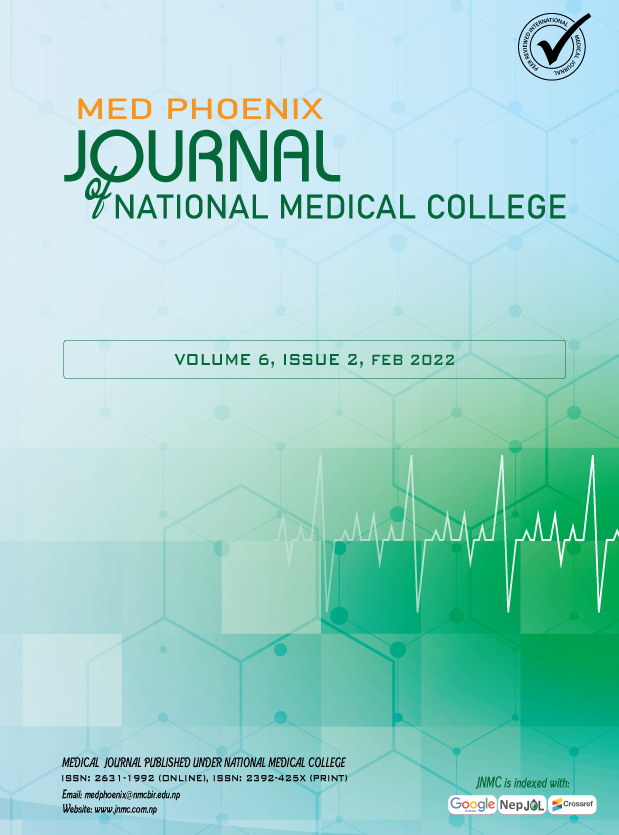Renal Artery Dimensions and Variation on Computed Tomography Angiogram: A Cross-sectional Study.
DOI:
https://doi.org/10.3126/medphoenix.v6i2.38371Keywords:
angiography, computed tomography, renal artery, renal artery, accessoryAbstract
Introduction
A knowledge of renal artery dimension is necessary for characterizing the physiological change as well as pathological process undergoing in the renal artery likely stenosis, ectasia, or aneurysm. This study aims to explore the anatomy of the renal artery with regards to its dimension, relation, and branching and identify the common anatomical variation.
Materials and Methods
The study was a retrospective hospital record-based study conducted during the period of one year from 2019 January to 2019 December. All abdominal CT angiograms were reviewed for renal artery anatomy and variation. Abnormal Abdominal CT angiograms were excluded from the study. Normal anatomy, dimensions, and variation of renal vasculature were assessed.
Results
A total of 110 patients included the inclusion criteria and was included in the study. The renal length and size of the renal artery were significantly larger on the left side. The renal artery diameter showed positive correlation with renal length (r= 0.432; p<0.001). No variation of the renal size of renal artery diameter was however noted with sex. Supernumerary arteries were seen in 33(30%) patients. The optimum cut-off value of renal artery diameter for predicting accessory renal artery was 5.35 or less which yielded a sensitivity of 75% and specificity of 70%. (AUC-0.79; p<0.001). When 4.15 mm was taken as cut-off, the specificity increased to 96% with a marked reduction in sensitivity to 3.6%.
Conclusion
Renal artery diameter is dependent on laterality, kidney size, and presence of accessory artery and independent of sex.
Downloads
Downloads
Published
How to Cite
Issue
Section
License
Copyright (c) 2022 Med Phoenix

This work is licensed under a Creative Commons Attribution 4.0 International License.
This license enables reusers to distribute, remix, adapt, and build upon the material in any medium or format, so long as attribution is given to the creator.
Copyright on any research article is transferred in full to MED PHOENIX upon publication. The copyright transfer includes the right to reproduce and distribute the article in any form of reproduction (printing, electronic media or any other form).




